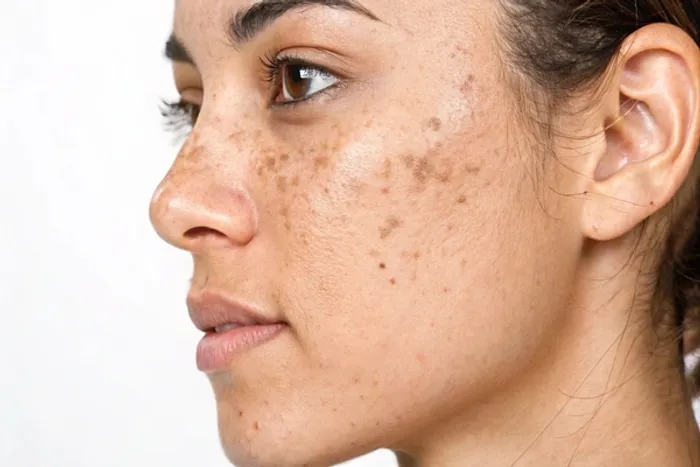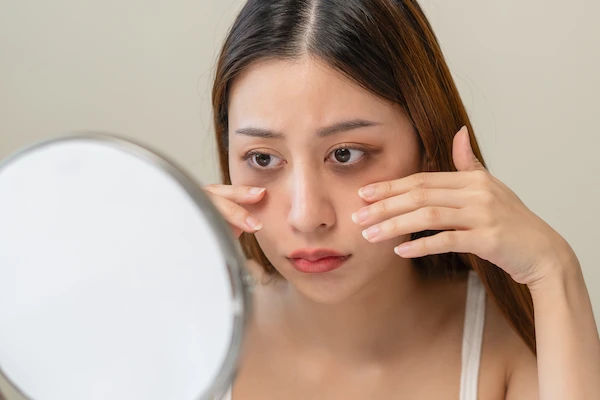Best Dermatologist-Approved Ways to Remove Dark Spots Naturally
Dermatologist-approved natural tips for dark spot removal. Learn safe skincare and hyperpigmentation treatment that really works, plus easy routines and FAQs.

Written by Dr. M L Ezhilarasan
Reviewed by Dr. Mohammed Kamran MBBS, FIDM
Last updated on 13th Nov, 2025

Introduction
Dark spots—also called hyperpigmentation—are common, harmless, and very treatable. They can show up after acne, sun exposure, eczema, or hormonal changes like pregnancy. If you’re looking for dark spot removal ideas that are gentle and “natural,” the good news is that many dermatologist-approved ingredients and habits come straight from everyday skincare. This guide explains what causes dark spots, the safest evidence-based options, and how to build a simple skincare plan for effective hyperpigmentation treatment at home.
Important note: A new, changing, or unusual spot should be checked by a healthcare professional to rule out skin cancer. The tips below are for benign dark spots only.
What Causes Dark Spots?
Understanding the trigger helps you choose the right approach.
Sun and “age” spots (solar lentigines)
- Caused by cumulative UV exposure over time.
- Often appear on the face, hands, shoulders, and arms.
- Prevention and maintenance hinge on daily sun protection.
Post-inflammatory hyperpigmentation (PIH)
- Dark marks left behind after acne, eczema, insect bites, or skin injury.
- More common and more persistent in medium to deep skin tones.
- Gentle care that reduces irritation is key.
Melasma and hormones
- Brown or gray-brown patches on the forehead, cheeks, and upper lip.
- Triggered by hormones (e.g., pregnancy, birth control) and sun/heat.
- Requires strict sun protection and consistent, gentle brightening.
When to see a doctor?
- Any new spot, changing in size/shape/colour, asymmetrical, has irregular borders, multiple colours, or bleeds/itches, warrants medical evaluation.
- If self-care doesn’t help after 8–12 weeks, consider a visit for tailored options.
Consult a Top Dermatologist for Personalised Advice
Dermatologist-Approved Natural and Gentle Ingredients for Dark Spots Removal
These ingredients are widely used in dermatology, and many originate from natural sources. Always patch test a new product on a small area for 24–48 hours
Vitamin C (ascorbic acid)
- What it does: Antioxidant that helps brighten skin, supports collagen, and interferes with melanin production.
- How to use: Apply a vitamin C serum in the morning after cleansing and before sunscreen. Concentrations often range from about 10–20% for L-ascorbic acid; gentler derivatives also exist.
- Tips: Store away from light and heat; look for stabilised formulas to reduce oxidation.
Niacinamide (vitamin B3)
- What it does: Helps reduce the transfer of pigment to skin cells, improves redness, and supports the skin barrier.
- How to use: Apply once or twice daily after cleansing. Commonly used at around 2–5%.
- Bonus: Plays well with most ingredients and suits sensitive skin.
Azelaic acid
- Origin: Naturally occurring in grains and produced by yeast; medical products are synthesised but mimic the natural compound.
- What it does: Brightens uneven tone, calms redness, and helps with acne—making it ideal for PIH and melasma.
- How to use: Apply once daily and increase to twice daily as tolerated. Over-the-counter products are commonly around 10%; stronger prescription strengths exist.
- Good to know: Often well tolerated and considered an option during pregnancy; confirm suitability with your clinician.
Kojic acid
- Origin: Derived from certain fungi during fermentation.
- What it does: Inhibits tyrosinase, an enzyme involved in melanin formation.
- How to use: Found in serums or creams, often in low percentages and frequently combined with other brighteners.
Liquorice root extract (glabridin)
- What it does: Helps calm inflammation and interferes with pigment production.
- How to use: Look for serums or moisturisers listing liquorice extract; pairs nicely with niacinamide.
Soy extract
- What it does: May reduce pigment transfer to skin cells, supporting a more even tone over time.
- How to use: Found in moisturisers and brightening lotions; works well in sensitive routines.
Aloe vera (aloin)
- What it does: Early studies suggest potential tyrosinase-inhibiting and soothing effects.
- How to use: Choose fragrance-free gels or creams with aloe; helpful as a supportive, calming step.
Green tea extract (EGCG)
- What it does: Antioxidant that can help manage oxidative stress from UV exposure and may support a brighter appearance.
- How to use: Often found in antioxidant serums or moisturisers; layer under sunscreen in the morning.
- Pro tip: Consistency matters more than intensity. Gentle products used daily beat strong products used sporadically.
Your Daily Skincare Routine for Hyperpigmentation Treatment
A simple, consistent plan helps you see steady results while preventing new spots.
Morning (AM)
- Cleanser: Use a gentle, fragrance-free cleanser to avoid irritation.
- Antioxidant serum: Vitamin C, green tea, or a combination serum to help brighten and defend against environmental damage.
- Moisturiser: Choose one with ceramides, glycerin, or hyaluronic acid to support the skin barrier.
- Sunscreen: Broad-spectrum SPF 30 or higher, every day, all year. Mineral formulas with zinc oxide or titanium dioxide are great for sensitive skin. If you prefer sheer, look for “tinted,” “sheer,” or “invisible” mineral sunscreens.
Evening (PM)
- Cleanser: Gentle cleanse; double-cleanse if wearing heavy sunscreen or makeup.
- Targeted treatment: Rotate or combine brighteners such as niacinamide, azelaic acid, kojic acid, or liquorice extract. Start with one, then add another after 2–4 weeks if skin stays calm.
- Moisturiser: Barrier-supporting cream to lock in hydration.
Optional weekly exfoliation
- Gentle exfoliation 1–3 times weekly can help dark marks fade more evenly. Look for lactic or mandelic acid products (commonly in lower percentages for at-home use).
- Avoid over-exfoliating; too much irritation can make pigmentation worse.
Sun Protection: The Non-Negotiable Step
The non-negotiable step includes:
UV exposure is the top driver of hyperpigmentation and the main reason spots come back. Make sun protection your daily habit:
- SPF 30 or higher, broad-spectrum, every morning and reapply every 2 hours outdoors.
- Use enough: Aim for a generous layer to fully cover face, ears, and neck.
- Wear hats, sunglasses, and seek shade between 10 a.m. and 4 p.m.
- Check the UV index; on high UV days, reapply more diligently and use protective clothing.
Tip for deeper skin tones: To avoid white cast, try tinted mineral formulas or modern “sheer” zinc oxide products designed for all tones.
Lifestyle Habits That Help Prevent New Dark Spots
The lifestyle habits include:
- Don’t pick or squeeze pimples: This is one of the biggest causes of PIH.
- Treat acne early: Gentle acne care reduces the risk of dark marks.
- Soothe, don’t strip: Fragrance-free, alcohol-free products protect your barrier and reduce irritation.
- Heat management for melasma: In addition to UV, heat can trigger melasma flares. Use hats, seek shade, and avoid unnecessary heat exposure on the face when possible.
- Medication review: Some medicines increase sun sensitivity. Ask your clinician or pharmacist if you’re unsure.
What to Avoid in DIY Dark Spot Removal?
Avoid the following things:
- Lemon juice, apple cider vinegar, and baking soda: These can irritate or burn skin and may worsen hyperpigmentation.
- Undiluted essential oils: High risk of irritation and allergic reactions.
- Strong peels at home: High-concentration acids should be left to professionals to avoid burns and rebound pigmentation.
- Over-scrubbing: Physical scrubs can inflame skin and darken spots, especially in medium to deep tones.
When Natural Methods Aren’t Enough: Medical Options
If consistent care for 8–12 weeks isn’t helping, ask a dermatologist about:
- Prescription creams: Hydroquinone (use under medical supervision), higher-strength azelaic acid, and combination formulas for melasma.
- Professional chemical peels: Supervised glycolic, lactic, or mandelic acid peels can safely accelerate results.
- Microneedling and devices: Some in-office treatments help, but device choice and settings matter—especially for deeper skin tones.
- Lasers: Effective for certain dark spots, but darker skin requires experienced clinicians and specific laser types to reduce the risk of worsening pigmentation.
How Long Do Results Take?
The time may vary for showing results and is influenced by different factors, including:
- Most brightening routines show early improvement by 4–6 weeks, with clearer results by 8–12 weeks.
- Sun protection must be daily and ongoing; without it, spots recur.
- Melasma often needs long-term maintenance and strict sun/heat protection.
Conclusion
Safe, steady dark spot removal relies on three pillars: a gentle routine, proven brighteners, and daily sun protection. With consistent skincare and the right hyperpigmentation treatment plan, most people see a clearer, more even complexion within a few months. If your spots are persistent, worsening, or look unusual, a dermatologist can tailor stronger (and still safe) options for you.
Consult a Top Dermatologist for Personalised Advice
Consult a Top Dermatologist for Personalised Advice

Dr. S Madhuri
Dermatologist
10 Years • MBBS, MD. DVL, DNB, Fellow (Dermatosurgery & Lasers)
Secunderabad
Apollo Hospitals Secunderabad, Secunderabad
(325+ Patients)

Dr. Bhavya Swarnkar
Dermatologist
14 Years • MBBS, MD, DNB (Dermatology, Venereology & Leprosy) Former Senior Resident, Department of Dermatology- AIIMS, New Delhi. Associate Consultant - Dermatology.
Bilaspur
Apollo Hospitals Seepat Road, Bilaspur
(225+ Patients)

Dr. Sonal Jain
Dermatologist
9 Years • MBBS, MD Dermatology, Venerology & Leprosy
Kolkata
MCR SUPER SPECIALITY POLY CLINIC & PATHOLOGY, Kolkata
(25+ Patients)

Dr. Sonal Jain
Dermatologist
9 Years • MBBS, MD (Skin & VD), DNB (DVL), Fellowship in Dermato Surgery
East Midnapore
VIVEKANANDA SEBA SADAN, East Midnapore

Dr. Priyankar Misra
Dermatologist
11 Years • MBBS, MD Dermatology , Venereology & Leprosy
Kolkata
MCR SUPER SPECIALITY POLY CLINIC & PATHOLOGY, Kolkata
Consult a Top Dermatologist for Personalised Advice

Dr. S Madhuri
Dermatologist
10 Years • MBBS, MD. DVL, DNB, Fellow (Dermatosurgery & Lasers)
Secunderabad
Apollo Hospitals Secunderabad, Secunderabad
(325+ Patients)

Dr. Bhavya Swarnkar
Dermatologist
14 Years • MBBS, MD, DNB (Dermatology, Venereology & Leprosy) Former Senior Resident, Department of Dermatology- AIIMS, New Delhi. Associate Consultant - Dermatology.
Bilaspur
Apollo Hospitals Seepat Road, Bilaspur
(225+ Patients)

Dr. Sonal Jain
Dermatologist
9 Years • MBBS, MD Dermatology, Venerology & Leprosy
Kolkata
MCR SUPER SPECIALITY POLY CLINIC & PATHOLOGY, Kolkata
(25+ Patients)

Dr. Sonal Jain
Dermatologist
9 Years • MBBS, MD (Skin & VD), DNB (DVL), Fellowship in Dermato Surgery
East Midnapore
VIVEKANANDA SEBA SADAN, East Midnapore

Dr. Priyankar Misra
Dermatologist
11 Years • MBBS, MD Dermatology , Venereology & Leprosy
Kolkata
MCR SUPER SPECIALITY POLY CLINIC & PATHOLOGY, Kolkata
More articles from Dark Circle
Frequently Asked Questions
How soon will I see results from vitamin C, niacinamide, or azelaic acid?
Many people notice brighter skin in 4–6 weeks, with more visible fading of spots by 8–12 weeks. Consistency and sun protection drive results.
Are these ingredients safe during pregnancy?
Sunscreen, vitamin C, and niacinamide are commonly used in pregnancy. Azelaic acid is often considered an option as well. Check with your prenatal provider before starting new products. Avoid prescription retinoids unless specifically approved by your doctor.
Can I combine multiple brighteners?
Yes, many routines safely combine niacinamide with vitamin C and/or azelaic acid. Start one new product at a time, add the next after 2–4 weeks, and stop if irritation appears.
Do home remedies like lemon juice work for dark spots?
They’re more likely to irritate or burn skin and can worsen hyperpigmentation. Stick to dermatologist-approved products with proven ingredients.
What’s the best sunscreen for dark skin tones?
Tinted mineral sunscreens or newer “sheer” zinc oxide formulas blend well without a white cast. Look for SPF 30+ and broad-spectrum. Reapply every 2 hours outdoors.




